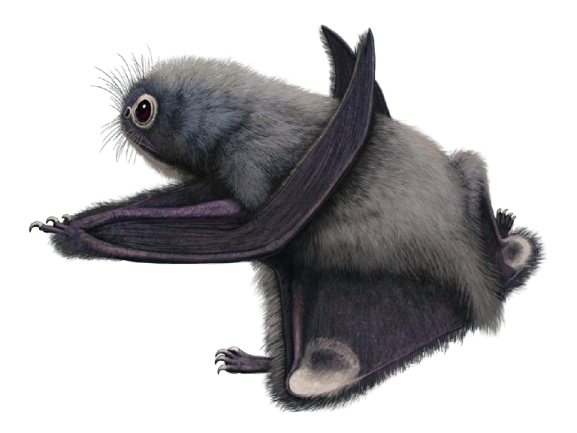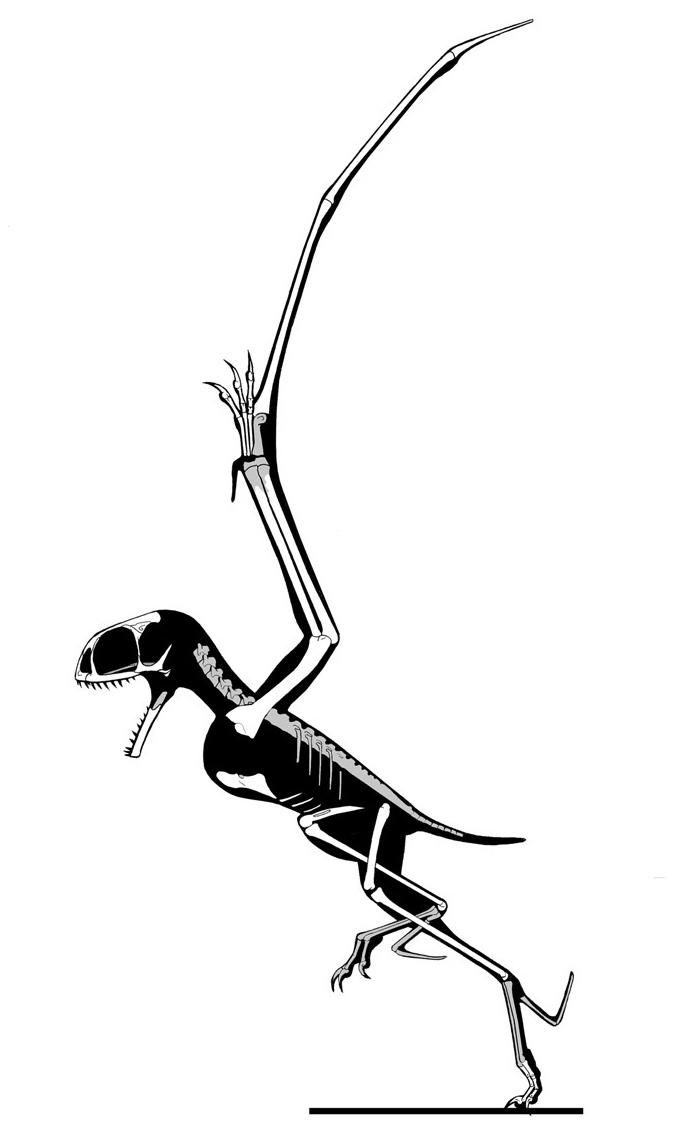Anurognathus
An-yu-roe-nath-us
Name meaning: Ammon's tailless jaw
Time Period: Tithonian (End of the Jurassic) 150-148 mya
Locations: Germany-Solnhofen Limestone Formation
Taxonomy: Pterosauria-Rhamphorhynchoidea-Anurognathidae
Subspecies: A. ammoni
Characteristics ~ ~ ~ ~
Anurognathus is the head of the anurognathid family, consisting of small pterosaurs that convergently share many traits with bats, like rounded heads and large eyes. Anurognathus was very small, being 3.5 inches long and having a wingspan of 14 inches and only weighing 40 grams. Like a mammal, it was covered in pycnofibres, a fuzz-like hair covering its body like fur that helped it keep warm and remain silent whilst moving. Also, like a mammal, it had bumps around the skull indicating it had whiskers to help with navigation and keep insects out of it’s eyes; its large eyes indicate it was more active during the later hours, like an owl, but it had no sonar adaptation, so it probably was crepuscular or active during the dawn and dusk. Its diet probably consisted of insects like dragonflies, moths, and other insects it could catch with its small, needle-like teeth. Anurognathus faced competition from birds like Archaeopteryx from the same formation that caused anurognathids to go extinct by the start of the Cretaceous period. they could fly more efficiently and were less susceptible to injury by being coated in fluffy feathers, later developed more efficent beaks and their voices could easily be heard allowing them to mate quickly.


History & Fossils ~ ~ ~ ~
Anurognathus was discovered in 1922; its holotype fossil: BSP 1922.I.42 was found in a sprawled out position, flattned. The position it’s in, hugging its arms in close, suggests it was hiding on the side of a tree to evade predators. In 1937, Anurognathidae was classified as it’s own pterosaur genus, diverging from Rhamphorhynchidae, which may have been the group's main predators.



Media Deptictions ~ ~ ~ ~
Jurassic World Alive Added in version 2.14
